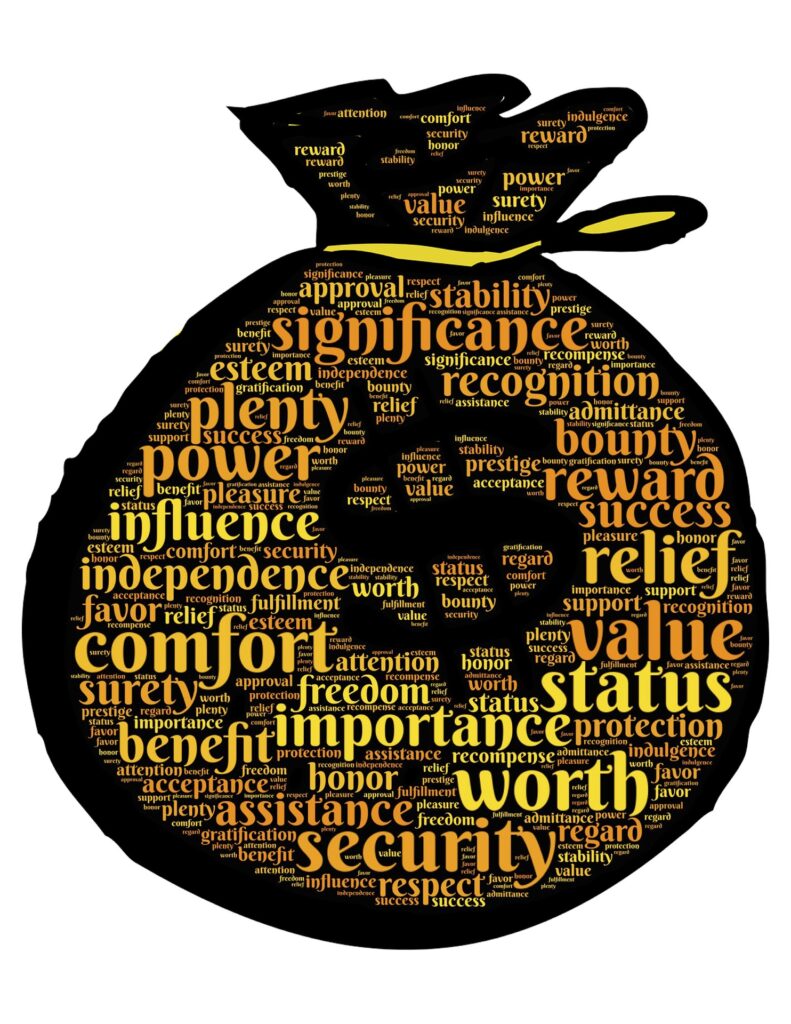
What Is Current Cash Value?
Definition and Example of Actual Cash Value
Actual cash value (ACV) is how an insurance company measures a property’s worth at a given moment in time. It accounts for depreciation. You may come across the term if you make a car insurance claim, or a claim on your homeowner’s policy.
Some policies use replacement cost instead of ACV to calculate your payout, but you must select this provision on your policy. Otherwise, ACV is the amount of money your insurer will pay if your car or home is damaged beyond repair.
If you total your car, the payout won’t be the same amount as what you paid for it. It will be for how much the vehicle was worth at the time of the accident. Your car is a depreciating asset. It loses value over time.
- Alternate name: Market value
- Acronym: stroke
note
Actual cash value is the estimated value of what your car (or other asset) would be worth on the open market at a particular point in time.
How Does Actual Cash Value Work?
Actual cash value is calculated by taking the replacement cost of the insured item (how much it would cost to replace it in full at market price) and subtracting depreciation due to age and the wear and tear that builds up after purchase.
Your insurer will figure out whether your car is a total loss by comparing its value to the estimated cost of repairs. It will be a total loss if the cost to return it to its pre-damage condition exceeds the value of the car.
The threshold for a total loss occurs at a certain percentage of its fair market value, and that can vary by state. For example, your car would be a total loss in Kansas or New York if the cost to repair it were 75% of its value, but the threshold is only 50% in Iowa. Then there are states like Texas where a car must lose 100 % of its fair market value to count as a total loss. Your insurer will pay you the car’s fair market value minus any deductible in your contract in that case.
note
The claim will be paid to the lender or lienholder if you still have money on the car and it’s a total loss.
How Much Value Is Lost Over Time?
A number of factors are used to figure out how much depreciation has occurred. They will vary, based on your carrier and your contract, but they often include:
- Pre-loss condition (the state your car was in before the damage)
- Mileage
- Add-ons and upgrades
- Recent sale prices of cars like yours in the same city
- “Salvage value” (the price that its parts and metal could fetch on resale)
Each insurer uses its own system to measure total loss payouts. They don’t use Kelley Blue Book to figure out these numbers, but they may use a third-party tool or resource. You can still get a ballpark figure of what you might receive by using Kelley Blue Book to help you estimate the value of your car.
note
You may want to opt for a replacement cost policy instead of one that uses ACV if you own an RV. It’s common for RV awnings to suffer damage from weather, sun, and wear over time.
ACV and Gap Insurance
ACV can become more complex if you financed the purchase of your car and haven’t paid it off yet. The ACV payout might not cover what you still owe your lender. Gap insurance addresses this issue. It helps you cover the “gap” between what you get as payout and what you owe.
You may want to look into buying gap insurance if you plan to finance a new car for 60 months or longer, if you’re putting less than 20% down, or if you’re leasing your car. Many people take their chances to avoid the extra monthly bill for this type of insurance. You might want to set aside the money in an emergency fund to cover the difference between the car’s value and your loan balance instead.
Current Cash Value vs. Replacement Cost
| Current Cash Value vs. Replacement Cost | |
|---|---|
| Current Cash Value | Replacement Cost |
| Lower premium each month. | Higher premium each month. |
| Payouts take deflation into account. | Payouts will cover cost to replace. |
Unlike ACV, replacement-cost payouts give you the money necessary to replace your car or home or another insured item, at least to a degree.
- Cars: You’ll be able to buy a new car with the payout if your car is totaled but you have replacement cost coverage.
- Homes: The replacement cost will be set at a dollar value. You’ll receive $250,000 that you can use to rebuild your home if it crumbles to the ground, and your contract is set at $250,000.
The tradeoff with replacement cost coverage is that it costs more in premiums. You might opt for a current cash value plan if you want to save money now. However, a replacement cost policy could be wise if you can afford higher costs now and want to ensure that you won’t need to dip into savings in case of a tragic event later.
It’s always wise to review your options, no matter which type of insurance you choose. Read the contract in full to make sure you’re covered in the way you expect.
Key Takeaways
- “Actual cash value” is an insurance industry term for determining the value of an insured item after taking any depreciating factors into account.
- Insurers have their own methods to measure current cash value. Factors include mileage, age, and add-ons for cars.
- Actual cash value is not the same as replacement cost, which covers the cost to replace the insured item if it’s totaled.
Thanks for your feedback!

Current cash value is an important financial term, most of which relates to investments and insurance products. It refers to the amount of money a policyholder has with any particular financial instrument at a given period of time. This article shall look at what current cash value means, its applications, how it works, and why it is very significant in financial planning.
Definition of Present Value
Current cash value Current cash value refers to the amount of liquid cash available to any individual from any given financial product, especially whole life insurance policy and other forms of cash-value life insurance. Unlike term life insurance, where the holder is covered for a specific period and no accumulation of cash or money occurs, in the whole life policy, cash builds up over time.
The current cash value is, however, unimportant to the policyholder.because it reflects a real financial asset available for times of immediate need, payment of premiums against borrowings or direct withdrawals for other financial needs; it therefore forms a very relevant factor in personal financial planning and investment strategies.
How Current Cash Value Works
1. Cash Value Building
With the policy cash-value life insurance, some of the premium payments go to build cash value. The cash value grows at a guaranteed interest rate, and sometimes, if declared by the insurer, policyholders may earn dividends in addition to enhance their cash values further.
The cash value grows rather slowly in the early years, but after a few years, it starts to grow much faster. The slow start is usually because the costs of the insurance component of the policy are higher. Over time, as the costs decline relative to the cash value accumulation, the current cash value can become quite substantial.
2. Access to Cash Value
There are various ways that policyholders can tap into the current cash value, including:
Withdrawals SIGNAL The policyholder can withdraw some of the cash value. This reduces the death benefit proportionately.
Loans:
The policyholder can avail of loans against the cash value. The interest rates are generally lower than conventional ones, and the policy continues as long as the loan is serviced.
Policy Surrender: ‘The extent a policyholder decides that they no longer need to have any insurance on their life, they may surrender a policy for its current cash value. However, this may have adverse tax consequences, and it will eradicate the death benefit.
3. Loans Against Policies and Interest
It is also important to note the interest mechanism when at any time the policyholder decides to take loans against their cash value. Normally, the insurer will charge interest on those loans, while non-payment will see the outstanding amount deducted from the death benefit, plus interest accrued. In other words, while the policyholders may have access to the cash value during their lifetime, they must be very prudent with the loans aspect so that it does not undermine the eventual payout that beneficiaries are entitled to.
THE CURRENT CASH VALUE MATTERS
1. Financial Flexibility
Current cash value offers a policyholder some form of financial flexibility. In times of dire financial needs, a policyholder is at an added advantage when they have cash value at their disposal. Individuals in dire need of medical attention or experiencing emergencies can enjoy their cash value without running into high-interest debts or credit cards.
2. Retirement Income Supplement
For other policyholders, the cash value accumulation at any time could even act as supplementary retirement income. Properly withdrawing or borrowing on cash value can enhance retirement income without incurring tax liability, provided one plans the withdrawals within the policy limits.
3. Long-Term Investment Strategy
For many policyholders, the current cash value is a long-term investment strategy. Though the growth rate may not be as high compared to other investment tools like stocks or mutual funds, the cash value develops steadily, offering a guaranteed return that is stable for any investment portfolio.
This consistent growth could be attractive to conservative investors looking to feel their money is safe and secure while planning their financial futures.
Current Cash Value versus Market Value
It is important to institute the concept of current cash value compared to market value, especially when investment instruments are concerned. While the market value pertains to the amount that an asset would fetch in the market if it were sold at this moment in time, current cash value refers to the liquid cash accessible from a financial product, such as a life insurance policy.
Recognizing the distinction will be important in financial planning. Whereas the market value fluctuates based on external factors, the current cash value in a life insurance policy is stable, constant, and predictable; therefore, it can be relied on by the policyholder.
Tax Consequences of Cash Values
Taxation considerations are another important aspect of current cash value. In many jurisdictions, the cash value accumulated in a life insurance policy grows on a tax-deferred basis. In other words, the policyholder does not pay taxes on the growth until funds are withdrawn or the policy is surrendered.
However, there are some tax considerations peculiar to this transaction:
Withdrawals:
With regard to the withdrawal of cash value, the policyholder will usually be taxed only on an amount exceeding his or her total premiums paid into the policy. It may prove to be one of the most tax-efficient means to gain access to money via withdrawals.
Loans:
Loans taken against the cash value are not considered taxable income, provided the policy is in force. At the time of policy lapse or surrender, the balance in loans taken against the policy becomes taxable.
Policy Surrender:
In case a policy is surrendered, the policyholder has to pay income tax on any cash value received in excess of total premiums paid.
It is very important to know such tax consequences for proper financial planning and enhancing the true value of cash currently on hand.
How to Choose the Right Policy Based on Current Cash Value
Some relevant factors considered when buying a life insurance policy for its present cash value are:
1. Type of Policy
There are several kinds of cash-value life insurance policies: whole life, universal life, and variable life insurance. Each one is different regarding how cash value builds up and also concerning the flexibility of payable premiums and death benefits. Whole life policies offer guaranteed cash value buildup, while universal and variable policies allow more investment flexibility.
2. Cost and Expenses
The costs to be factored in are those of premium, administration fees, and any surrender charges that apply under the policy. This will come in handy in establishing the overall value of its cash value component.

3. Insurance Needs
The more critical issue in buying personal insurance is assessing one’s personal needs. Life insurance has more to it than just the current value in cash. One has to look at the amount of coverage, long-term finances, and one’s family needs.
4. Financial Objectives
It is very important to align the selection of policy with financial goals. In this case, the term policy might be suitable for those whose primary need for life insurance is to provide for a death benefit while those who want a buildup of cash value can go for a whole life or universal life policy.
The Impact of Current Cash Value on Estate Planning
Another estate planning consideration is the current cash value. Cash value bearing life insurance policies may ensure liquidity of an estate to facilitate beneficiaries in paying for various estate expenses such as taxes, debt settlement, or funeral arrangements without liquidation of other assets.
Cash value can also be used strategically in transferring wealth. For instance, some people name their heirs as the beneficiaries of the policy; this way, their heirs can use the cash values without any delays or complications.
Overview
Current cash value is a huge, foundational concept in the vicinity of life insurance and personal finance. A person informed as to how this works, implications in financial planning, its tax considerations could very well equip him to make sound decisions regarding their insurance products.
By using current cash value to their advantage, policyholders are able to gain financial flexibility, add income to retirement, and manage their overall investment strategy with more power. Like any other financial decision, identification of goals should first be made, the potential tax implications weighed, and it is wise to consider consultations with financial professionals in order to maximize the benefits of current cash value for a strategic overMeeting financial plan.
Cash value life insurance can be a powerful addition to financial planning, offering stability and peace of mind for today, with the possibility of future financial opportunities. It is for this reason that understanding the concept constitutes a critical step toward achieving long-lasting financial security.